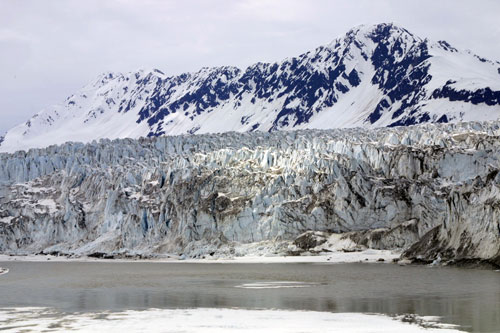
Assessing the influence of Alaska glaciers is slippery work
May 27, 2011
Anthony Arendt, an assistant research professor at the University of Alaska Fairbanks Geophysical Institute, has outlined the complexity and influence of Alaska glaciers in this week’s issue of the journal Science. In his article, Arendt explains the importance of integrating field observations and more precise glacier simulation models.
Childs Glacier
Glacial patterns are difficult to predict - even for current computer models. Alaska glaciers often behave independently of one another. They retreat and surge, and are subject to volcanic and oceanic influences, in addition to changes in precipitation and warming temperatures. Data collected in the field will help refine existing models, so that a more accurate picture of changing sea level can be drawn. “Alaska glaciers have been losing mass more rapidly since the mid-1990s than they were several decades earlier,” Arendt states in the article. “Understanding whether this trend continues will require an integration of observations across disciplines, as well as the development of robust glacier simulation models.” According to Arendt, glaciers and ice caps make up a mere three percent of the ice on our planet, yet they account for about half of the sea level contribution. These dynamic chunks of ice are tremendously influential on future coastlines. “There are many people living very close to the sea in areas where even a small change in sea level would be devastating,” Arendt said. “Developing countries don’t have the resources to deal with this change.” To create the best sea level forecasts, Arendt said that scientists need to use field observations to fill data gaps in current models. With thousands of glaciers in Alaska, scientists have much more work to do, he said, noting that the research will ultimately help the global community better adapt to sea level change.
ON THE WEB:
E-mail your news &
photos to editor@sitnews.us
|
